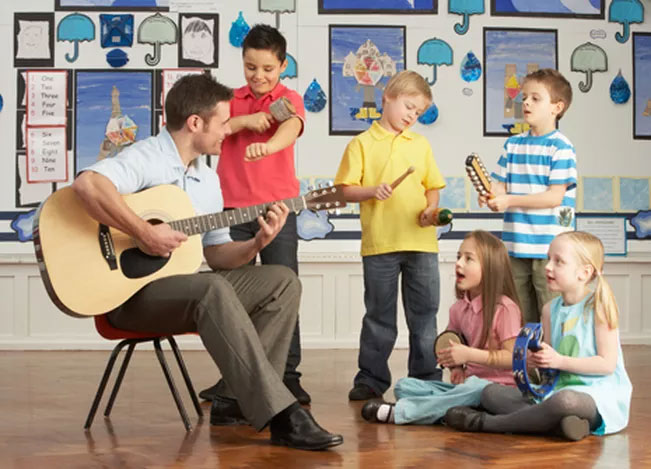
by Maurizio Vespa | Mar 25, 2018 | Family
When my family gets together with our friends, it is quite common for us to talk about our children and in particular to talk about how a child’s behaviour changes when we are out shopping, visiting friends or in unfamiliar surroundings.
There are numerous reasons why a child’s behaviour changes. Unfamiliar surroundings and people can trigger change, or it could be the drive for fun and excitement, that may arise for the child. Plus, let’s not leave out the possibility that maybe the rules at home are different in this new setting. It could be a combination of these and others.
The first thing I learnt quickly as a parent, was when taking your children anyway, it is important to talk with your child about where we were going. The next step, was to explain that we couldn’t touch things. Part of this explanation was to say that it is not our home or our things. Once your child begins to talk and they can express themselves even with a few words, this is a great time to talk with them about what is nice and not nice. Children have an amazing ability to understand early concepts, especially if we deliver these messages with the appropriate tonality.
Another useful tip is, to make sure before you go out, that your child is well fed, has a change of clothes and ask your child to bring along one favourite toy. We would always let our child choose one or two favourite toys. Being well fed before you go out and having a toy, helps the parent to avoid the cravings for food and a new toy.
It is just as helpful to let the child know that there are different rules at other peoples home or when they go out, so the time we take to explain, the easier it is on our children and for ourselves. If your child does play up do not hesitate to cut your visit short so that the child knows that our behaviour has an effect. Once back in your normal setting it is a wonderful time to talk about the experience and to explain what we do next time.
The more time and thought we place into our planning and preparation the easier it can be. These new experiences help us to teach our children about visible and invisible boundaries.

by Maurizio Vespa | Feb 25, 2018 | Health & Wellbeing
Teenage Mental Health: Build a Strong Flexible Supportive Bridge
In the past 16 years, I have spent time working with teenagers with trauma and mental health issues. In working with these fabulous young people, they taught me a great deal about emotional pain, vulnerability and importance of listening, supporting and not given up on them.
In Australia, approximately one in six teenagers have some form of mental health or trauma related issue. In a classroom of thirty students, it means, that there are seven kids who are affected and of maybe two or three may seek help from a school counsellor of significant adult. The other students are either too afraid or embarrassed to talk or share with anyone and may not feel as though they have a significant adult or person they can relate too and trust. They fear being singled out, ridiculed and ultimately bullied by others.
As a result these kids often become behavioural concerns and get labelled as defiant, the trouble maker or “the school refuser”. Families then become embroiled in the battle with School, Education systems’, and the Courts, all with the best intentions but often with an authoritarian approach to managing the situation. All of this adding to the traumatic experience for the child, which impacts on their relationship once again with their family. The crisis circle is spinning around and around.
Having worked with these teenagers, they all express a genuine willingness to want to change their circumstances but struggle to get that kick-start. What they taught me was that if you empower them to make decisions and listen without judgement, then it is amazing what they are capable of accomplishing. Often these teenagers struggle to connect with adults and they feel unsafe and constantly under threat. This threat comes from the emotional feelings they pick up from others around them. People who just do not understand what they are experiencing and who make them feel different. They get told “to get a grip on things” or to “build a bridge and get over it” and it is far from being that simple.
From my experience what is helpful, is to ask them “what do they want to do”, and to listen and encourage them to problem solve with our help. To develop a plan with two or three practical strategies that is easy for them to enforce so that they see success and growth in what they are doing. When any adult is working with child who has experienced trauma, it is critical to acknowledge that the change process will take time. It requires supportive adults who are prepared to journey with these kids. Adults who have the endurance to be patient, positive, energised and do not give up when there is a setback.
Any child who has had a traumatic experience cannot manage the change on their own, and it is unrealistic to expect them to bring about change without assistance. By providing adult support, wisdom and positivity is so valuable and when there are setbacks, focus on what they have achieved no matter how small. Then problem solve what more can we do together to get to the next step. Progress is never smooth or linear there will be moments when it’s two steps forward and one step or more backwards. The key is to reflect on on the backward steps and highlight what has been achieved, what has been learnt, and to use what was learnt for the next two steps forward.
The research evidence into mental health states that the brain is capable of repair and healing and that it is possible for the brain to develop new neuron pathways, and therefore create the opportunity to learn, adapt and change. If a safe and secure environment surrounds the child and the adults who work with them believe in them, while the memories of events will remain, the pain will diminish.
I also found that the language, I used with these kids makes a huge difference in how they engage with you. There has to be dialogue and a tonality that is soft, calming, and non-threatening. Avoid emotive language, as well as blameful or judgemental statements because it alienates and further disconnects the child.
To force a child into compliance and work with what the adult’s plan can be a lost cause. This does not work well at, all plans with these children must involve them, and it needs to be kept simple, practical, and realistic. They must be able to achieve some level of success from the plan and what adds the icing to this, is acknowledgment they receive from the adults.

by Maurizio Vespa | Jan 2, 2018 | Education
The end of year school holidays cannot come quick enough for some teachers. However, as soon as the festive season is over, the “Back to School” items appear on department shelves and the mixed feelings, thoughts and emotions begin to surface. From my own experience, it was thoughts of “where did the time go”? Really, is it that time again?
Yes, I knew very well, the work that was ahead of me but I also knew that how I begin the year with my students, inevitably sets up how and what the new year would feel, look and sound like for the students and myself.
So, as the teacher, “What am I responsible for at the start of this school year”?
1. Establish a classroom learning agreement
Firstly, in collaboration with your students you need to establish a classroom learning agreement. Create a list of classroom expectations, no more than seven to ten, that are practical, realistic and that each person is able to commit too and manage. Type these up and hand them out at the start of our next lesson. Discuss with them, if we need to add or make changes to our agreed list. You inform the class that we will review our agreement mid way through the school term and at the start of each subsequent term.
2. Set up a “Fear Free” learning environment and celebrate mistakes
To create a learning environment that is safe to make mistakes, is important, so it is helpful to share your thoughts about “fear” and “failure” with students. Fear, does nothing to assist learning and it does not contribute to positive learning relationships. Therefore, if any student enters your class and is in anyway fearful or scared, then we are responsible for working with that student to explore ways of dispelling that feeling.
If students make mistakes or fail at first attempts, it means they have made an effort, they have “had a go” and confronted the challenge. Hence, we still take away learnings from the experience. Our role is to provide extra opportunities and support for the student to re-attempt the setbacks again until they feel confident. Fear is debilitating and failure makes people feel shameful, neither is healthy in the classroom.
3. Be mindful of the language and tone
The tonality of your voice and the language you use with students is critical in setting up the learning space. A calming, confident and assertive tone contributes to positive feelings, safety, security and a respectful interactive atmosphere. A great practice is to greet the students when they come into class, and when they leave at the end of a lesson. Statements like, “ good morning”, “welcome everyone”, and as you end the lesson, “enjoy the rest of your day” are uplifting. These positive and respectful comments, contribute to positive learning relationships.
Language that is aggressive, sarcastic, disrespectful and impacts on the dignity of a person is damaging to the creation of a positive classroom climate. Therefore, when you need to get the students attention, use a respectful tone and refuse to shout instructions over people. If and when, you require the attention of students, wait patiently, until it is given to you, and thank them for respectfully working with me. The behaviour you model is the behaviour you would like your class to reflect.
4. Be predictable with your moods
In my 30 plus years working in education, I have experienced more and more students with signs of mental health and trauma related issues. Anxiety is at the very top of my list.
This point follows on from number 3 and for students with anxiety, being predictable in our moods helps students to remain and feel settled. It is perfectly OK, for you to feel annoyed, upset, frustrated with situations that may arise during the lesson etc. It is also OK for you to communicate that you are not happy with the level of noise, or the distractions etc, etc, etc. However, it is not Ok, to take it out our hurt and place it onto students because it will make me feel better or it allows me to assert my authority and regain power and control.
How we express my emotions, and the manner in which we do it, teaches and models to our students how it is respectfully carried out. If our daily mood is unpredictable, it can heighten anxiety levels and effect a student’s ability to engage socially and in the learning process.
5. Transparent and clear student management process
Talking with students about your expectations and classroom management style is helpful because it places them at ease. Being clear (transparent) and consistent with students contributes to a calmer space and helps build learning relationships and engagement. It is always helpful remind students of our agreed classroom expectations. Then if necessary explore ways to manage situations by using de-escalating intervention strategies such as redirecting students back to their work or onto a different task. At the completion of the lesson, you may ask a student, time permitting, to have a conversation with you about what was happening during the lesson but if it is not possible, ask them to catch up with you during a break in the day.
It is helpful to constantly remind yourself, that whenever you take the time to correct a student’s behaviour, it empowers you. It also holds the student/s accountable and allows them to be engaged in a conversation with you.
When you engage in a conversation with students to explain their inappropriate actions or behaviours, you are implementing a natural consequence. This conversation, however, needs to focus on exploring respectful and appropriate actions and behaviours. Hence, you are teaching and modelling what is acceptable behaviour, you are also contributing to building resilience by topping up emotional and self-regulatory skills.








Recent Comments